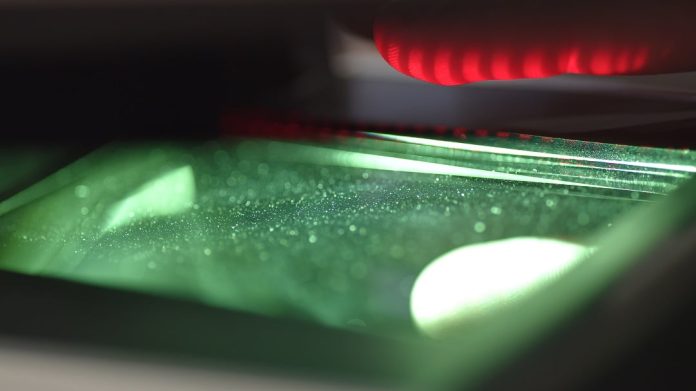The use of biometric technology is already prolific in everyday life, ranging from smartphones that require fingerprints for identification to border control systems with facial recognition technology, writes IDEMIA’s Dave Tullipan*.
Market projections of the biometrics industry are estimated to reach $US28.83 billion by 2027, driven not only by developments in the healthcare industry, but demands for high levels of security in private, commercial, and public establishments.
As countries start to recover from the pandemic and cautiously open offices and spaces, some employees have expressed hesitancy in returning to work due to multiple contact points at entry. Employers therefore face the challenge of keeping their workers safe not only when transiting in and out of a workplace, but even between spaces. A solution to this problem can simply be a contactless access control that involve biometrics which bring more security than traditional access control methods (simple badges).
In this new normal, facial recognition technology offers an effective solution to these issues and can be combined with other tools and technologies to enhance overall building and space security. It features more advanced metrics for identification while allowing for better hygiene practices, and increases convenience and efficiency by being able to scan more people in less time. These benefits have the potential to transform workplaces and spaces into safe and healthy areas that will positively impact worker output and productivity.
Improving Workplace Access Control
To protect their workers and spaces, workplaces need access control solutions that are dependable and quick, but are also capable of precise detection. Biometric facial recognition technology such as VisionPass can provide highly accurate information at entry access points in less than one second, which is superior to traditional entry methods. When installed outdoor, it can also withstand different weather conditions and be easily deployed at various locations, which vastly improves its usability and enhances security.
VisionPass combines Artificial Intelligence with 2D, 3D and infra-red cameras utilising a facial recognition stereoscopic image processing algorithm. The level of security is especially high because the cameras are ‘spoof proof’, taking multiple angles into account to cater to different heights, light conditions, skin colours and even nuances such as hairstyle changes and the presence of helmets.
Additionally, facial features are often obscured by masks now for hygiene reasons, which affects the accuracy of most standard facial recognition solutions. However, IDEMIA’s algorithm has achieved over 95 per cent accuracy in a test to identify mask-wearers at the 2020 Biometric Technology Rally1, with over 99.5 per cent True Identification Rate (TIR) achieved for non-mask wearers – especially pertinent for secure access in this current climate. It is also interesting to note that IDEMIA’s facial recognition has been ranked first in NIST’s latest FRVT test2.
Enhancing Internal Security & Economic Benefits
Biometric technology isn’t limited to eliminating external security threats only. Internal workplace security can also be vulnerable to situations involving employee identity theft, vandalism, cheating, equipment theft or unethical practices such as clocking another employee in or out who is not present at the time. But facial recognition technology can go a long way towards preventing these issues from happening.
Because facial recognition technology can be linked to internal systems and is ‘spoof proof’, employers can use solutions like VisionPass to control access to equipment, prevent fraudulent time and attendance entries by reliable time logging and deter theft. They can also restrict access to parts of the building based on specific clearance levels for different spaces.
Facial recognition technology can also be integrated with overall building security systems, which provides an overall ‘intelligent building ecosystem’ that can utilize technology and the Internet of Things (IoT) to regulate temperatures, air quality, connectivity and respond to emergencies, ensuring an overall safe and healthy environment. When applied in tandem, this brings benefits not just to an isolated workplace or office, but the entire building and its occupants.
For instance, IDEMIA’s collaboration with industrial automation company Honeywell sees the integration of VisionPass into a smart building management solution, which is designed to reduce shared touchpoints and physical contact to access different areas in a building. This will help buildings operate more cleanly and safely, as well as encourage sustained compliance with changing building standards, safety guidelines, government-issued regulations and companies’ risk management policies.
Biometric technology also improves overall output as it contributes towards the making of healthy buildings and safe environments and increases workplace productivity by eliminating manual access-related oversight and employee error. For instance, workers in a building with VisionPass installed can be freed from administrative hassles such as replacing key cards, keys, or other tasks related to traditional entry methods. Biometrics increase security by adding ‘something you are’ to ‘something you know’ (PIN) with ‘something you have’ (access card).
Moving towards a contactless future
Contactless biometrics are already proving to be a significant player in the market for workplace or building access control as businesses look at building more secure, efficient and hygienic workplaces. Facial recognition biometrics like VisionPass, in particular, are proving effective. The capacity of VisionPass to accurately recognize people with masks without requiring physical touch enables it to provide an unparalleled level of security that does not require compromising on the all-important hygiene factor.
When integrated with internal building and workplace security systems, facial recognition biometrics can offer exponentially heightened internal and external security. This also facilities an overall healthy building culture, and supports the government’s efforts towards building digitalized economies and IoT-supported societies. Organizations and companies would therefore do well to consider integrating and utilizing contactless biometric identification methods into their workplace and space security – not just to cope with the current ‘new normal’, but to prepare for the future of work.
*David Tullipan is regional sales director, ANZ-Pacific, Biometric Devices, at IDEMIA.
#securityelectronicsandnetworks.com













